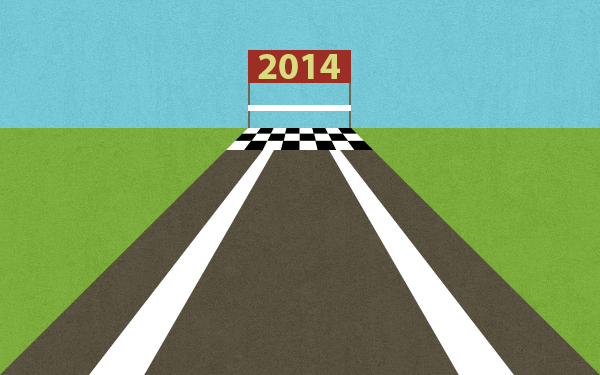
In December of last year, I told myself that 2014 would be different. I drafted a detailed excel sheet with a tight schedule that accounted for every opportune moment to squeeze in a mile long task list. With unwavering confidence, I braved the New Year set to get a head start on business goals while everyone else was still stumbling out with a mild hangover. To my own surprise, I succeed. In fact, here I am at 5 in the morning writing this blog post with exquisite enthusiasm and the utmost inspiration. The underlying question is: how did I succeed this year (when I have more on my plate than ever before) than I did in all my previous years?
As a younger self, I had all the time in the world to get things done; but I had one incredibly powerful excuse to fail. That excuse was time. I always complained that I didn’t have enough of it. Fast forward a few years and throw in a writing career, a special needs toddler, and a budding side business, and we can all sit back and marvel at how anything is really getting done right now. But it is. My writing skills are stronger than ever, my parenting is top notch, and I’m actually enjoying exploring a side-business that (while technically failing) allows me to explore and experiment with new ways of doing things.
Here’s how it’s all happening…
- Expect to Fail. Sure it’s odd that this would be the first tip on achieving your goals, but it’s a pretty important one. If you’re as neurotic as me, you know your world ends when one of your goals isn’t met. The problem (contrary to what your own brain might tell you) isn’t that you’re a slob; it’s that you’re an overachiever. You set your own expectations so high that when you inevitably fail, your morale comes tumbling down as well. So please stop doing that. Have your high list of expectations, but be kind to yourself and know you cannot possibly do it all in one day – and no one expects you to but yourself.
- Make Room for Play. Your brain needs a break. It needs to be able to unplug from frenetic thinking and saturate in its subconscious, which is when and where the real problem solving gets done. So make room for breaks. If you can’t leave you desk, distract yourself every so often by just looking at something else. If I’m writing and stuck on how to phrase a thought for example, I don’t waste ten minutes forcing myself to think through it. Instead, I go check out a favorite blog just to be able to mentally step away from a problem. This brings us to our third point.
- Overlap Interests. It helps that my favorite blogs also support my work. I enjoy reading about what I do and I enjoy overlapping fields of study. So even when I’m ‘distracting’ myself with a fun read, I’m still really working, curating, researching, and thinking. This also makes me a more non-linear thinker (see my previous post entitled “The New Direction of Leadership: Cultivating the Non-Linear Thinker”). Wake up Early – On an ideal day, I’m up at 4am. I take about a half hour to ‘get with it’, which is usually done by getting some news going and making a cup of tea. This time is absolutely priceless. It’s when no one is around and nothing is there to bother or distract me. By the time the little one wakes up for his day, I’ve already gotten in a good 4 hours of work. Any article you read on the habits of highly successful people will support this theory.
- Start Moving. It only took me about 10 years to get in the habit of this. As a Forbes article on “How Successful Leaders Attain Superhuman Energy Before Most People Wake up” will attest to, it’s incredibly important for people to fit in some sort of physical exercise if for no other reason than to prepare their bodies for the toll their work takes on them. The mortality rates with sedentary lives aside, it takes energy to meet the amount of physical and mental demands placed on active business people – especially leaders. As the article phrases it, “weight-training and cardio exercises give them the strength and endurance to communicate with energy all day,” citing an example of Apple CEO Tim Cook being able to step off an 18-hour plane trip followed by a 12-hour meeting in which he outlasted all the other executives. This doesn’t mean you also need to be at the gym at 5am; a one hour brisk walk a day should do it.




